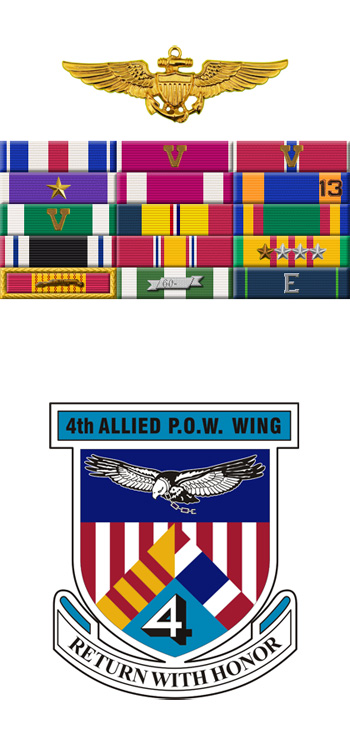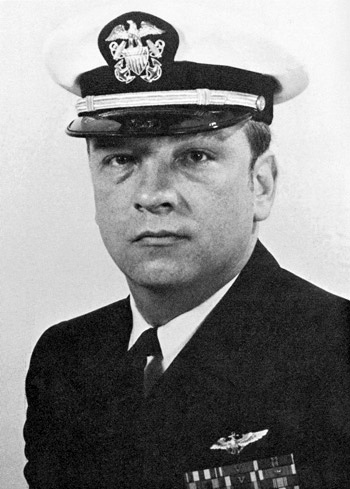
|
Charles D. Stackhouse |
 |
|||
| Rank, Service | ||||
Commander O-5, U.S. Navy |
||||
| Veteran of: | ||||
|
||||
| Tribute: | ||||
Charles Stackhouse was born on March 13, 1940, in Sheboygan, Wisconsin. He entered the U.S. Naval Academy on July 1, 1957, and was graduated with a commission as an Ensign on June 7, 1961. Ens Stackhouse remained at the Academy as a Company Officer until he began flight training in September 1961. He was ranked number one in his graduating flight class and was designated a Naval Aviator in June 1963. He then served as an A-1 Skyraider pilot with VA-65 at NAS Oceana, Virginia, and aboard the USS Enterprise from June 1963 to December 1964, making an around the world cruise with Nuclear Task Force One earlier that year. In February 1965, Lt Stackhouse was ordered to report as a TF-9J Cougar advanced instrument instructor pilot with VA-45 at NAS Jacksonville, Florida. Following that training in May of that year he was transferred to VA-44 at NAS Jacksonville for A-4 Skyhawk Replacement Air Group pilot training. Upon completion of that aircraft transition in July, LT Stackhouse flew with VA-76 once again aboard the USS Enterprise for its first combat tour from 2 Dec 1965 until June of the following year. In support of the growing Vietnam War the squadron was ordered to cease operations on the east coast and resume combat training on the west coast at NAS Lemoore, California, In July 1966. Early in February 1967, the squadron was deployed aboard the aircraft carrier USS Bon Homme Richard (CVA-31) and Lt Stackhouse started his second combat tour. On April 25, 1967, he was forced to eject over North Vietnam and was taken as a Prisoner of War. After spending 2,141 days in captivity, Lcdr Stackhouse was released during Operation Homecoming on March 4, 1973. After a brief hospitalization at Oakland Naval Hospital to recover from his injuries he was once again assigned to VA-44 in Jacksonville, Florida, for requalification in the A-4 aircraft. Lcdr Stackhouse elected to advance his education and attended Vanderbilt University in Nashville, TN, for 3 months before he was transferred to SMU in Dallas to complete his MBA. His next assignment was at NAS Corpus Christi, Texas, as the Budget Officer for the Chief of Naval Air Training responsible for allocation and control of a $26 million annual budget, funding 6 air stations, 25 training squadrons, including the Blue Angels, and 10,000 civilian personnel. In December 1978, then Cdr Stackhouse was transferred to his final duty station at NAS Dallas, Texas, until his retirement from the Navy on February 1, 1982. He is especially proud of his having had the opportunity to serve his country as a Naval Aviator and to accumulate over 440 total carrier landings,130 of those at night, both in peace time and following 120 missions in combat. Charles Stackhouse Flew West on November 12, 2022, and was buried at Dallas-Fort Worth National Cemetery in Dallas, Texas. |
||||
|
||||

